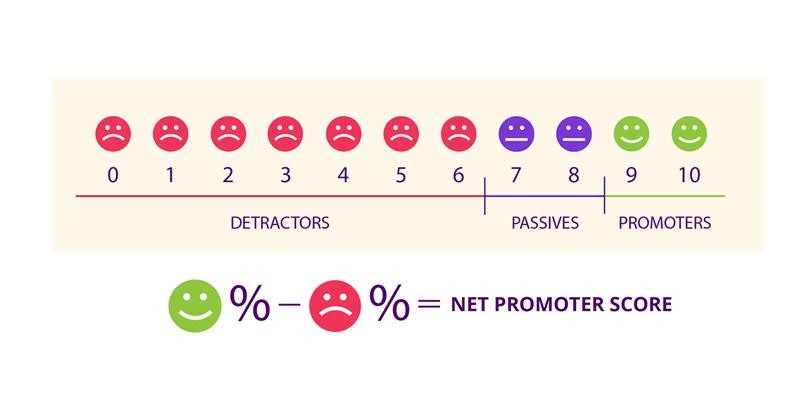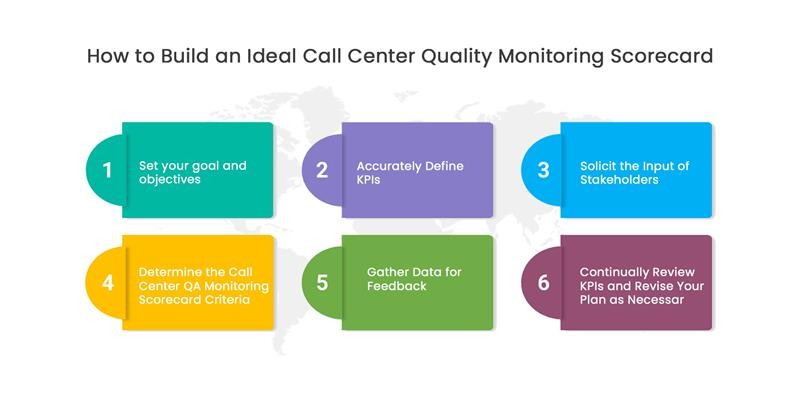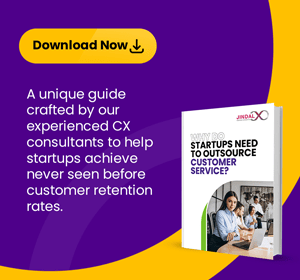
Customer experience (CX) reigns supreme with new technology advancements interrupting the market. Call centers, often the first point of contact for customers, play a crucial role in shaping brand perception and fostering customer loyalty. However, many call centers struggle to translate good intentions into reality. A recent study by Zendesk states that 80% of customers report feeling frustrated after interacting with a call center, highlighting a significant disconnect between service offered and customer expectations.
This disconnect often stems from a lack of focus on customer centric call center KPIs (key performance indicators). Traditional call center metrics, like average handle time (AHT), prioritize efficiency over customer satisfaction. By implementing a data-driven approach that prioritizes customer needs, call centers can bridge the gap and deliver exceptional customer service.
9 Customer-Focused Call Center KPIs
Many call centers struggle to bridge the gap between good intentions and reality. Traditional metrics, focused solely on efficiency, often overlook the true measure of success: customer satisfaction. Let’s delve into 9 crucial customer-focused call center KPIs that empower you to measure what truly matters, prioritize customer needs, and ultimately deliver exceptional customer service.
1. First Call Resolution (FCR) Rate
Imagine a customer calls your call center with a pressing issue. An efficient resolution on the first contact translates to a positive customer experience. First Call Resolution (FCR) Rate measures the percentage of calls resolved during the initial contact with an agent. High FCR rates indicate well-trained agents with access to comprehensive information, leading to a positive customer service experience.

How to Improve FCR
- Equip agents with thorough knowledge bases and readily available resources.
- Empower agents to resolve issues independently within established protocols.
- Implement call routing strategies that direct calls to specialists for complex inquiries.
- Track and analyze common customer issues to identify knowledge gaps and provide targeted training.
2. Customer Satisfaction (CSAT) Score
Customer Satisfaction (CSAT) Score is a direct measure of a customer’s perception of their interaction with your call center. Typically collected through post-call surveys, CSAT scores provide valuable feedback on agent courtesy, issue resolution effectiveness, and overall call experience. High CSAT scores indicate satisfied customers more likely to remain loyal and recommend your brand.
How to Improve CSAT
- Conduct regular CSAT surveys and analyze feedback to identify areas for improvement.
- Implement agent coaching programs focused on empathy, active listening, and problem-solving skills.
- Encourage agents to personalize interactions and show genuine concern for customer needs.
- Empower agents to offer solutions that go beyond the minimum, exceeding customer expectations.
Read Also: How to improve Customer Satisfaction
3. Net Promoter Score (NPS)
Net Promoter Score (NPS) measures customer loyalty and likelihood to recommend your brand to others. NPS is calculated based on customer responses to a single question: “On a scale of 0-10, how likely are you to recommend our company to a friend or colleague?” High NPS scores indicate a loyal customer base that trusts and advocates for your brand.
How to Improve NPS
- Analyze NPS scores alongside CSAT data to understand the drivers of customer satisfaction and dissatisfaction.
- Implement initiatives that address recurring customer pain points identified through feedback.
- Encourage agents to actively solicit positive feedback and share success stories with the broader team.
- Focus on exceeding customer expectations consistently to build brand loyalty and positive word-of-mouth.
4. Customer Effort Score (CES)
Customer Effort Score (CES) measures the ease and simplicity of a customer’s journey in resolving an issue through your call center. A low CES score indicates a smooth and effortless experience, while a high score suggests difficulty and frustration for the customer. Prioritizing a low CES score translates to a positive customer service experience and increased customer satisfaction.
How to Improve CES
- Streamline self-service options with clear instructions and easy-to-navigate menus.
- Offer multi-channel communication options (phone, chat, email) for customer convenience.
- Empower agents to resolve issues efficiently by providing them with the necessary resources and tools.
- Implement clear call routing strategies to avoid lengthy call transfers and holds.
5. Resolution Time (RT) vs. First Response Time (FRT)
Resolution Time (RT) measures the average time it takes to fully resolve a customer inquiry, whereas First Response Time (FRT) focuses on the initial response to a customer contact (call, email, chat). While both metrics are important, prioritizing RT ensures comprehensive issue resolution, leading to enhanced customer satisfaction.
How to Improve RT and FRT
- Optimize call routing to connect customers with the most qualified agents for their specific needs.
- Equip agents with efficient troubleshooting tools and readily available knowledge resources.
- Implement performance management systems that incentivize timely issue resolution while maintaining high-quality customer interactions.
- Regularly analyze call recordings to identify recurring challenges and areas for agent training improvement.
Understanding the Nuance: RT vs. FRT
- It’s important to understand the distinction between RT and FRT. While FRT emphasizes a prompt initial response, a rushed response without a complete resolution can negatively impact customer satisfaction. The ideal scenario involves a balance between both metrics. By prioritizing efficient troubleshooting and agent training, call centers can achieve faster resolution times without compromising customer service quality.
6. Agent Occupancy Rate
Agent Occupancy Rate measures the percentage of time call center agents spend actively engaged with customer calls. While a high occupancy rate might suggest efficient resource utilization, it’s crucial to consider the impact on agent performance. Excessively high occupancy rates can lead to agent burnout, decreased call quality, and ultimately, lower customer satisfaction.
How to Optimize Agent Occupancy Rate
- Implement workload management strategies that ensure a healthy balance between call volume and agent availability.
- Utilize scheduling tools to optimize agent schedules based on anticipated call volume fluctuations.
- Offer agents adequate breaks and downtime to prevent burnout and maintain focus.
- Encourage knowledge sharing and collaboration among agents to expedite issue resolution.
5 Ways to Adjust Your CX as per consumer behaviour
7. Average Handle Time (AHT)
Average Handle Time (AHT) measures the average duration of a call center interaction, including hold time, agent talk time, and wrap-up time. While AHT can be a useful metric for identifying areas for efficiency improvement, it shouldn’t be the sole focus. Prioritizing a lower AHT at the expense of thorough issue resolution can negatively impact customer satisfaction.
Optimizing AHT for Customer Satisfaction
- Equip agents with the necessary skills to handle inquiries efficiently while maintaining a professional and helpful demeanor.
- Invest in call center software solutions that streamline workflows and automate repetitive tasks.
- Implement clear and concise scripting for common issues to ensure efficient communication and resolution.
- Regularly review AHT data alongside customer satisfaction metrics to ensure a healthy balance between efficiency and quality service.
8. Abandonment Rate
Abandonment Rate measures the percentage of calls that are disconnected before being answered by an agent or reaching an automated solution (IVR). High abandonment rates indicate customer frustration with long wait times or difficulty navigating the call center system. Reducing abandonment rates is crucial for improving customer experience and preventing lost opportunities.
How to Reduce Abandonment Rate
- Accurately forecast call volume to ensure adequate agent staffing levels during peak periods.
- Implement an informative IVR system with clear options and efficient routing strategies.
- Communicate realistic wait times to customers on hold and offer a callback option to avoid lengthy hold periods.
- Continuously monitor and analyze abandonment rates to identify areas for improvement in call routing and self-service options.
9. Quality Monitoring Scores
Quality Monitoring Scores assess the quality of call center agent interactions. Evaluators typically analyze recorded calls based on pre-defined criteria such as agent courtesy, active listening skills, problem-solving effectiveness, and adherence to company protocols. High quality monitoring scores indicate well-trained agents who consistently deliver exceptional customer service.

Utilizing Quality Monitoring for Improvement:
- Implement a consistent quality monitoring program with clear evaluation criteria.
- Provide agents with regular feedback based on call recordings, highlighting strengths and areas for improvement.
- Conduct targeted coaching sessions focused on specific skills identified through quality monitoring data.
- Recognize and reward agents who consistently receive high quality monitoring scores to incentivize best practices.
Conclusion
By implementing a data-driven approach that prioritizes customer-centric KPIs, call centers can transform themselves from cost centers to strategic assets that drive customer satisfaction, loyalty, and ultimately, business growth. The 9 KPIs explored in this blog provide a solid foundation for measuring what truly matters – customer experience. Regularly tracking and analyzing these metrics will empower you to identify areas for improvement, make informed decisions, and improve customer support services. Remember, a customer-centric call center is a key differentiator in today’s competitive landscape. Start tracking these call center KPIs today and take your customer service to the next level.
FAQs:
1. What are the biggest challenges call centers face in delivering exceptional customer service?
Many call centers struggle to strike a balance between efficiency and customer satisfaction. Traditional metrics like AHT (Average Handle Time) might prioritize speedy call resolution, but this can come at the expense of thoroughness and a positive customer experience. Additionally, outdated call center technology or a lack of agent training can lead to long wait times, difficulty resolving issues, and ultimately, frustrated customers.
2. Why are customer focused KPIs important for call centers?
Focusing solely on internal metrics like call volume or agent occupancy rate doesn’t provide a complete picture of your call center’s performance. Customer-centric call center KPIs like CSAT (Customer Satisfaction Score) or NPS (Net Promoter Score) offer valuable insights into how customers perceive your service. By tracking these metrics, call centers can identify areas for improvement, ensure agents are effectively resolving issues, and ultimately build stronger customer relationships.
3. How can I get started with implementing customer focused KPIs in my call center?
Start by identifying the most critical aspects of your customer service experience. Consider metrics like FCR (First Call Resolution) to measure efficiency in resolving issues on the first contact, or CES (Customer Effort Score) to understand how easy it is for customers to get their problems solved. Invest in call center software that provides robust reporting capabilities to track these KPIs over time. Once you have a baseline understanding of your performance, you can develop targeted improvement strategies based on the data you collect. Regularly analyzing customer-focused KPIs will empower you to make data-driven decisions and continuously improve your call center’s effectiveness in delivering exceptional customer service.









